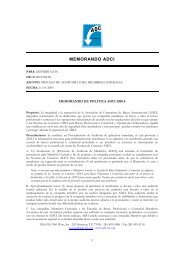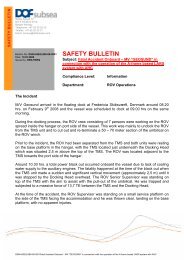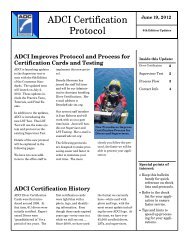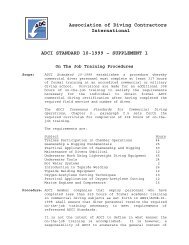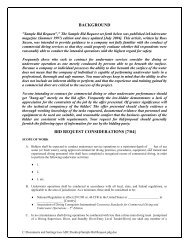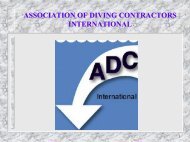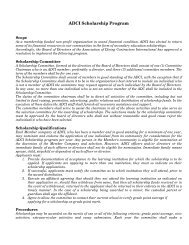DIRECTIVE NUMBER: CPL 02-00-151 EFFECTIVE DATE ... - OSHA
DIRECTIVE NUMBER: CPL 02-00-151 EFFECTIVE DATE ... - OSHA
DIRECTIVE NUMBER: CPL 02-00-151 EFFECTIVE DATE ... - OSHA
You also want an ePaper? Increase the reach of your titles
YUMPU automatically turns print PDFs into web optimized ePapers that Google loves.
and a bag-type resuscitator with a transparent hose and mask (so that the<br />
operator can see that the diver’s air passages are clear).<br />
4. 29 CFR 1910.421(d) Planning and assessment. This provision requires the<br />
employer to include in the planning of a diving operation an assessment of the<br />
safety and health features of the diving mode, surface and underwater<br />
conditions and hazards, primary and reserve breathing-gas supply, thermal<br />
protection, diving equipment and systems, dive-team assignments and the<br />
physical fitness of dive-team members (including any impairments known to the<br />
employer), repetitive dive designation or residual inert-gas status of divers,<br />
decompression chamber procedures (including any altitude corrections), and<br />
emergency procedures. The employer typically assigns this planning task to the<br />
designated person-in-charge. Most of the information required by this provision<br />
should be in the safe practices manual (see 29 CFR 1910.420). While<br />
conducting the planning and assessment, the employer must consider all hazards<br />
involved and ensure compliance with other <strong>OSHA</strong> standards (such as 29 CFR<br />
1910.147 – The control of hazardous energy (lockout/tagout); 29 CFR Part<br />
1910, Subpart H – Hazardous Materials; 29 CFR Part 1910, Subpart N –<br />
Materials Handling and Storage; and 29 CFR Part 1910, Subpart Q – Welding,<br />
Cutting and Brazing). Some information may not be found in the safe practice<br />
manual because it cannot be determined until the dive team reaches the dive<br />
location. The CSHO can question the dive-team members to determine that the<br />
employer has complied with the requirements of this provision.<br />
NOTE: 29 CFR 1910.421(d) can be cited for any identified hazard that was not<br />
addressed properly by an employer when they planned and conducted an<br />
assessment of the diving operation or the work to be performed. For example,<br />
the hazards of installing piling underwater remain similar to installing piling<br />
above water with respect to maintaining vertical stability, and being positively<br />
secured to prevent accidental detachment of the pile from the hoisting<br />
equipment (see ANSI/ASSE A10.19-2<strong>00</strong>8 – Safety Requirements for Pile<br />
Installation and Extraction Operations and ANSI A10.42-2<strong>00</strong>0 – Safety<br />
Requirements for Rigging Qualifications – American National Standard for<br />
Construction and Demolition Operations).<br />
NOTE: The NOAA Diving Manual addresses diving at altitudes above sea<br />
level in Section 4.5 (Dealing with Changes in Altitude). Altitude corrections<br />
are not typically required for most dives conducted below 1,<strong>00</strong>0 feet (altitude)<br />
as discussed in the manual.<br />
5. 29 CFR 1910.421(e) Hazardous activities. Hazards encountered during diving<br />
operations such as weather, water temperature, current, and bottom conditions<br />
must be recognized and taken into account during the planning and execution of<br />
the operation. When other operations being conducted in the vicinity (such as<br />
dredging, marine traffic, or movement of materials directly above the dive<br />
location and/or area of the dive) are likely to interfere with the diving operation,<br />
the designated person-in-charge shall plan the operation only after appropriate<br />
coordination with persons responsible for the other activities so that any hazard<br />
19


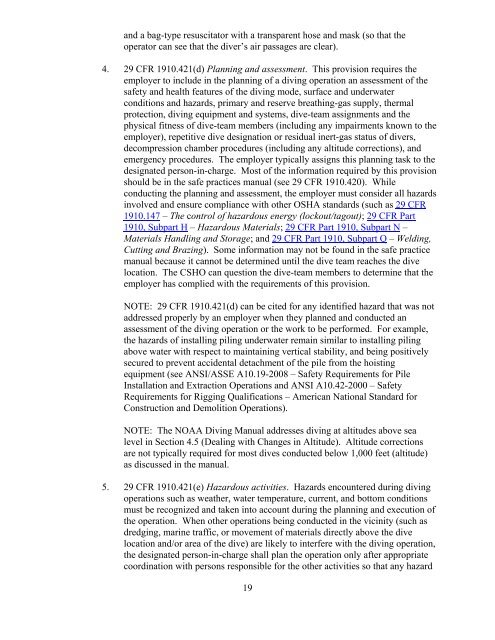
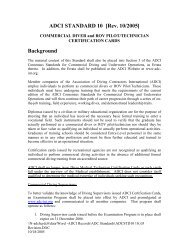
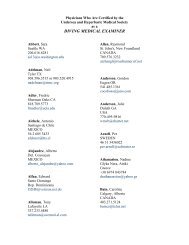
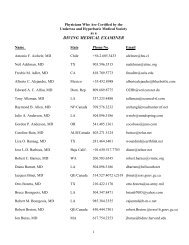
![SOLICITUD MEMBRESIA ASOCIADO [Rev 06/08] - Association of ...](https://img.yumpu.com/48291988/1/190x245/solicitud-membresia-asociado-rev-06-08-association-of-.jpg?quality=85)

